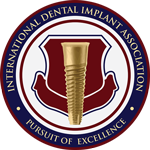
THE AMOUNT OF work it takes to keep a smile healthy and strong can vary from person to person. For some people, simply sticking to a good daily regimen of brushing and flossing and visiting the dentist a couple times a year is enough to keep the cavities away. For others, particularly those with a condition called enamel hypoplasia, it can be much more difficult.
Healthy Tooth Enamel
Tooth enamel forms the outer layer of our teeth. It protects the dentin and pulp from decay and infection. Composed of minerals such as hydroxyapatite, tooth enamel is the hardest substance in the human body, but it is still highly vulnerable to acid erosion. Every day, it goes through cycles of demineralization and remineralization. One of the goals of dental care is to make sure the balance stays tipped in favor of remineralization so the enamel remains strong, but when too much of it wears away, it won’t be able to repair itself.
Enamel Hypoplasia
Enamel forms long before the teeth erupt through the gums. Enamel hypoplasia is a defect that causes enamel to develop poorly. Symptoms include:
- White spots
- Yellowish-brown stains
- Pits, depressions, fissures, and grooves in the teeth
- Irregular wear
- Increased vulnerability to cavities and decay
A less severe condition of the tooth enamel is hypomineralization, which results in softer and more translucent enamel due to insufficient mineral content. It may only affect an individual tooth, in which case it is called Turner’s hypoplasia, often the result of an injury or infection while the tooth was still developing.
What Causes Enamel Hypoplasia?
Several hereditary conditions can cause enamel hypoplasia, but there are also environmental causes, like with Turner’s hypoplasia. Prenatal conditions, a lack of prenatal care, and low or premature birth weight can all be problems for healthy tooth formation, as can a deficiency in calcium or vitamins A, C, or D, certain diseases, trauma, or infection.
Maintaining Healthy Teeth with Hypoplasia
Prevention is always an important part of good dental care, and that is especially true for those with enamel hypoplasia. Early diagnosis and treatment of the condition are essential for keeping teeth with malformed enamel healthy. Treatment can mean fillings, crowns, resin-bonded sealant, and professional whitening. The main goals of the treatment are preventing tooth decay, helping to maintain a good bite, preserving the tooth structure, and keeping a good appearance.
The Dentist Can Help
The dentist is a wonderful resource for helping teeth stay healthy, which is why it’s so important to go regularly for cleanings and exams, not just once there’s a serious toothache or other problem. Whether your teeth have healthy enamel or you’re struggling with hypomineralization or hypoplasia, the dentist is your best ally!






